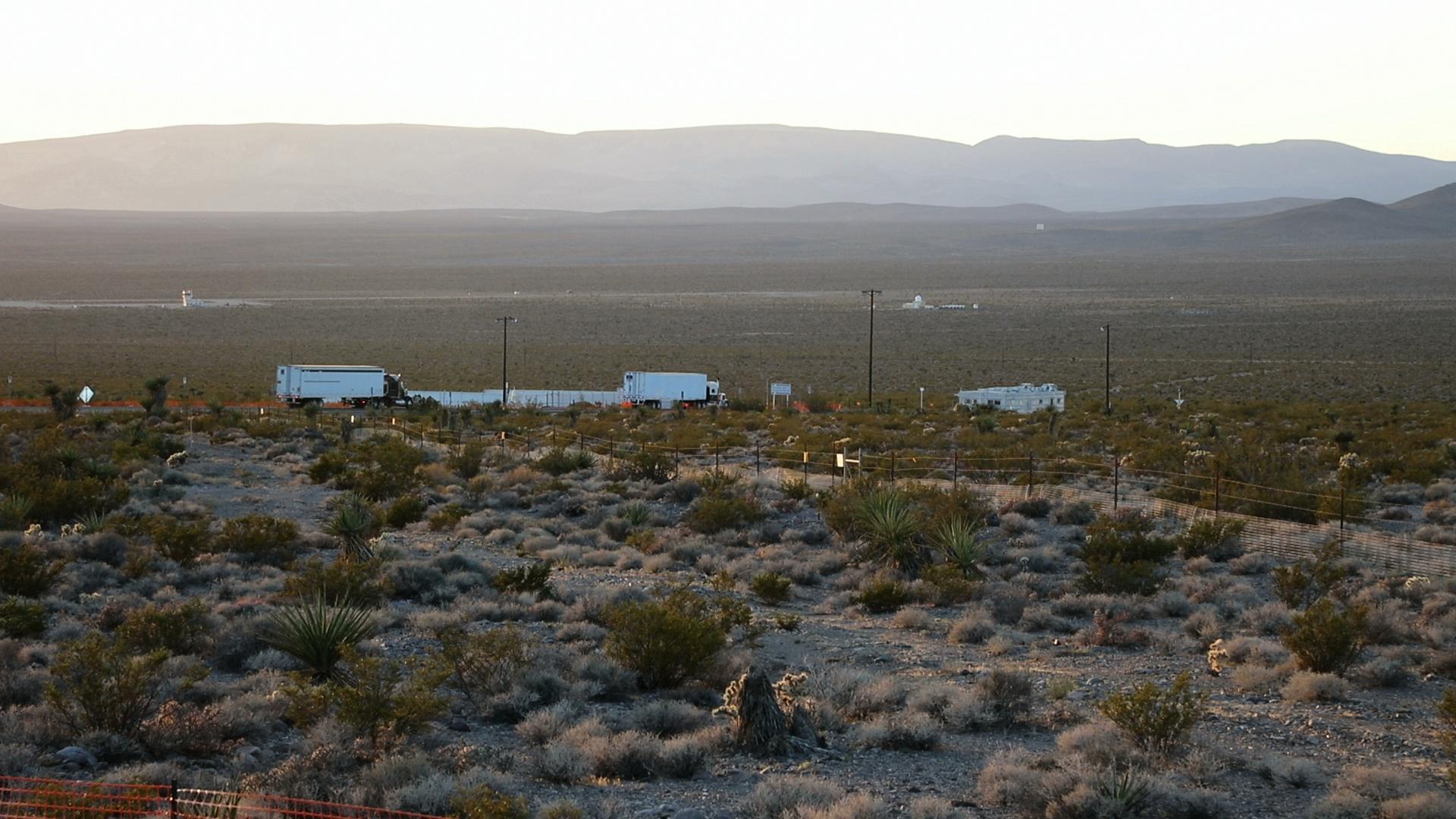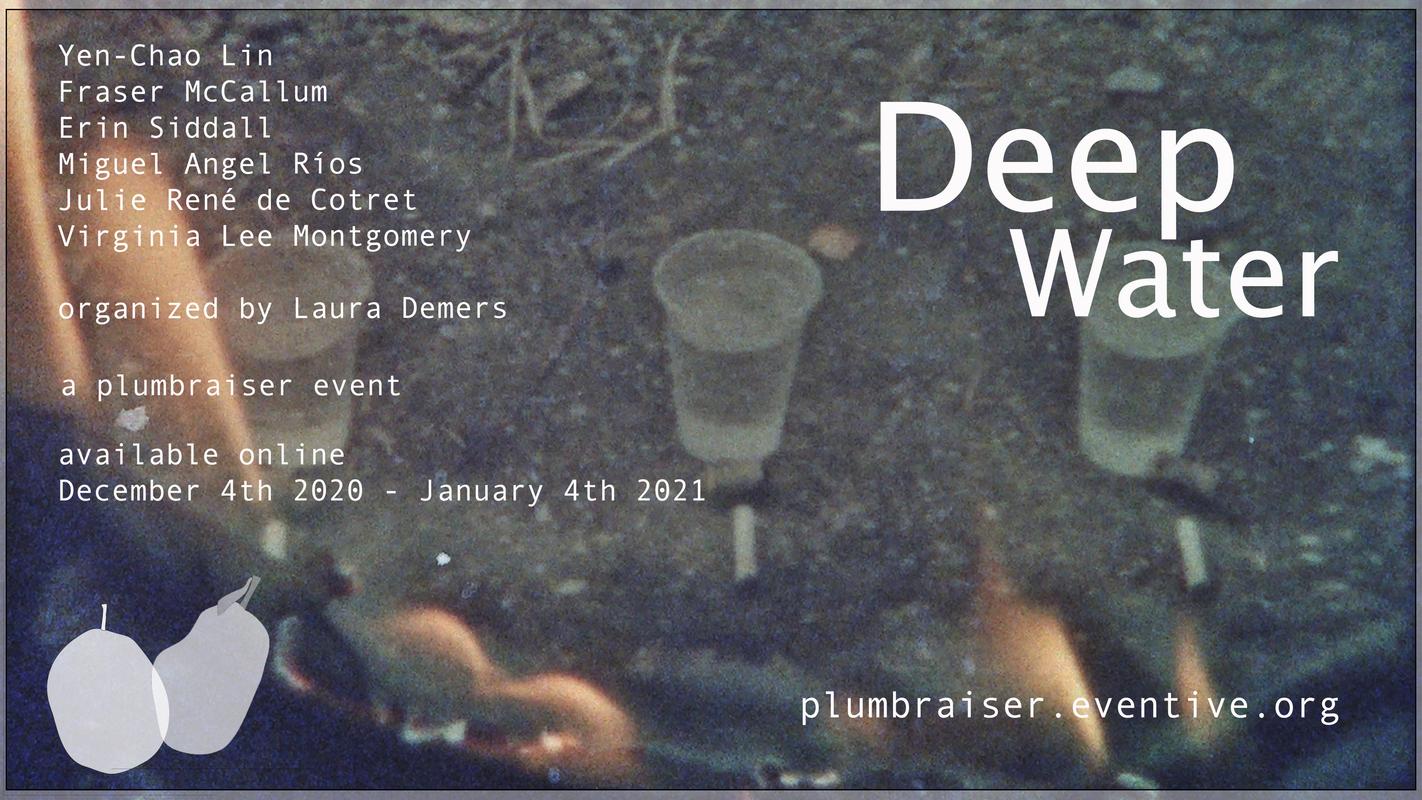
Deep Water features works by Yen-Chao Lin (Montreal), Fraser McCallum (Toronto), Erin Siddall (Vancouver), Miguel Angel Ríos (New York/Oaxaca), Julie René de Cotret and JuJe Collective (Guelph), and Virginia Lee Montgomery (New York/Houston). Produced over the span of the last decade, these short videos and film works make use of natural elements—water, air, fire, minerals, etc.—to circle around issues such as the exploitation of environmental resources, colonial tendencies encroaching on sacred spaces and rituals, pilgrimages to locales that bear remnant traces of activism and protest, the fraught period that we call modernity, and metaphysical ways of summoning hope for the future. Blending documentary, experimental film, performance documentation, archival research, site visits, and semi-fantastic folk retellings, the works included in Deep Water are linked by a common surreal or dreamlike atmosphere, perhaps suggesting a permeability between the exterior world and psychic topographies.
Deep Water is organized by Laura Demers, and is presented as part of the plumbraiser, a fundraiser for the plumb
Many thanks to the Toronto Palestine Film Festival (TPFF) for sponsoring this virtual screening.
In the photographic series Proving Ground: Nevada, uranium glass dishware is placed and photographed on the archaeological remains at the site of the now inactive iconic Cold War era anti-nuclear protest camp adjacent to the Mercury Nuclear test site in Nevada. In the pre-nuclear era, uranium oxide was routinely mined in Canada to provide the color for depression-era dishware given for free by food companies, cinemas, and bowling alleys to entice customers. Uranium glass production ended in the early 1940’s as uranium was used instead for nuclear testing. The green glow the dishes emit is the result of light shone to detect the normally imperceptible radioactivity. The problematic materiality of the dishes is revealed through the documentation: an invisible threat to the body is in contrast to the objects’ benign domesticity. The artist’s placement of these dishes calls up the now absent bodies of the former protestors, and as an imperative reminder to re-inhabit the spaces of protest.
Accessed by tunnel from the protest encampment, a chain-link ring once used to detain protesters still stands beside the outermost entryway into the restricted test site. Filmed on the 70th anniversary of the dropping of the first Atomic bomb on Hiroshima, The Pen is a video work which considers the empty enclosure as an object defining a precise discipline, mimicking the high-security fencing surrounding the entire test site.
Erin Siddall is a Vancouver-based visual artist whose work encourages the viewer to think about the embodied experience of looking, beyond the subject they are looking at. Siddall’s practice also considers how to represent the unrepresentable with photography: as invisible environmental hazards, hidden histories, and traumatic events. Current collaborative work with Tsema Igharas meditates on the actual and metaphysical landscapes of the north: Canada’s nuclear histories, resulting radioactive and environmental hazards, and the potential for future traumatic events consumed by corporatized resource extraction. Siddall holds an MFA from the University of British Columbia, a BMA from Emily Carr University, and has screened and shown in solo, public or group contexts at galleries and festivals such as The Vancouver Art Gallery, Gallery 44, Access Gallery, Satellite Gallery, CSA Space, Nuite Blanche Saskatoon, The Helen and Morris Belkin Art Gallery, The Western Front Gallery, Winsor Gallery, and the Burrard Art Foundation Studio.
- Year2015
- Runtime9:22
- CountryCanada, United States
- DirectorErin Siddall

Deep Water features works by Yen-Chao Lin (Montreal), Fraser McCallum (Toronto), Erin Siddall (Vancouver), Miguel Angel Ríos (New York/Oaxaca), Julie René de Cotret and JuJe Collective (Guelph), and Virginia Lee Montgomery (New York/Houston). Produced over the span of the last decade, these short videos and film works make use of natural elements—water, air, fire, minerals, etc.—to circle around issues such as the exploitation of environmental resources, colonial tendencies encroaching on sacred spaces and rituals, pilgrimages to locales that bear remnant traces of activism and protest, the fraught period that we call modernity, and metaphysical ways of summoning hope for the future. Blending documentary, experimental film, performance documentation, archival research, site visits, and semi-fantastic folk retellings, the works included in Deep Water are linked by a common surreal or dreamlike atmosphere, perhaps suggesting a permeability between the exterior world and psychic topographies.
Deep Water is organized by Laura Demers, and is presented as part of the plumbraiser, a fundraiser for the plumb
Many thanks to the Toronto Palestine Film Festival (TPFF) for sponsoring this virtual screening.
In the photographic series Proving Ground: Nevada, uranium glass dishware is placed and photographed on the archaeological remains at the site of the now inactive iconic Cold War era anti-nuclear protest camp adjacent to the Mercury Nuclear test site in Nevada. In the pre-nuclear era, uranium oxide was routinely mined in Canada to provide the color for depression-era dishware given for free by food companies, cinemas, and bowling alleys to entice customers. Uranium glass production ended in the early 1940’s as uranium was used instead for nuclear testing. The green glow the dishes emit is the result of light shone to detect the normally imperceptible radioactivity. The problematic materiality of the dishes is revealed through the documentation: an invisible threat to the body is in contrast to the objects’ benign domesticity. The artist’s placement of these dishes calls up the now absent bodies of the former protestors, and as an imperative reminder to re-inhabit the spaces of protest.
Accessed by tunnel from the protest encampment, a chain-link ring once used to detain protesters still stands beside the outermost entryway into the restricted test site. Filmed on the 70th anniversary of the dropping of the first Atomic bomb on Hiroshima, The Pen is a video work which considers the empty enclosure as an object defining a precise discipline, mimicking the high-security fencing surrounding the entire test site.
Erin Siddall is a Vancouver-based visual artist whose work encourages the viewer to think about the embodied experience of looking, beyond the subject they are looking at. Siddall’s practice also considers how to represent the unrepresentable with photography: as invisible environmental hazards, hidden histories, and traumatic events. Current collaborative work with Tsema Igharas meditates on the actual and metaphysical landscapes of the north: Canada’s nuclear histories, resulting radioactive and environmental hazards, and the potential for future traumatic events consumed by corporatized resource extraction. Siddall holds an MFA from the University of British Columbia, a BMA from Emily Carr University, and has screened and shown in solo, public or group contexts at galleries and festivals such as The Vancouver Art Gallery, Gallery 44, Access Gallery, Satellite Gallery, CSA Space, Nuite Blanche Saskatoon, The Helen and Morris Belkin Art Gallery, The Western Front Gallery, Winsor Gallery, and the Burrard Art Foundation Studio.
- Year2015
- Runtime9:22
- CountryCanada, United States
- DirectorErin Siddall